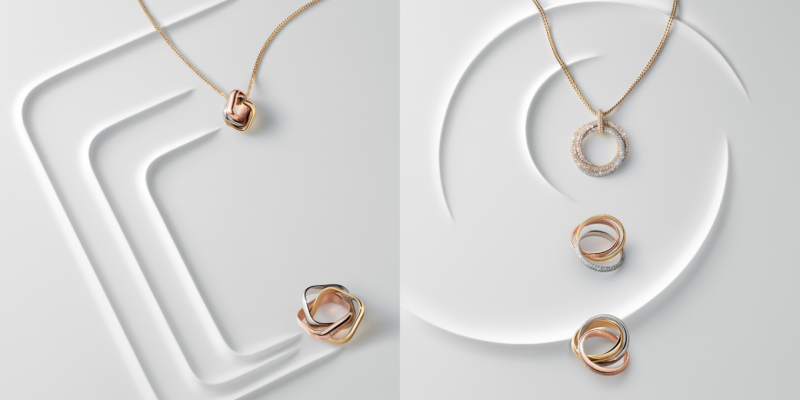Culture
The wedding planner: Dos and don'ts on seating plans, budgets and cash bars!
by : Nikki Linton- Jun 10th, 2006

It’s tempting to splash out when you’re planning your big day — just look at Indian steel magnate Lakshmi Mittal, who lavished some $66 million on his little princess. That might be out of the ordinary, but even the average North American-style wedding now costs around $20,000. This is where an experienced wedding planner really earns her keep. “We come up with ideas to make the day really special,” says Lisa Pasin of Edmonton-based I Do! I Do! Wedding Consultants (www.idoidoweddings.com), “but we also negotiate deals with suppliers to match the couple’s style and budget.”
Here Lisa gives us her best advice on the do’s and don’t’s of planning your big day.
Do Create a seating plan for all your guests. It takes more time on the bride and groom’s end, but really ensures your guests have the best time. You can sit guests together who you know will enjoy themselves together.
Do Allocate 2 to 2-1/2 hours for your formal photographs. They do take that long. If possible, I recommend having your photographs done prior to the ceremony. The bride and groom are at their freshest and by having the ceremony followed immediately by the cocktail reception and dinner, your guests don’t have time to waste in-between. The buildup of energy immediately following the ceremony is fantastic and makes for a great cocktail reception.
Get tips on looking picture perfect!
Do Develop a budget. That is the first thing I do with my clients. Have a high and low end, and determine what your comfort level is.
Do Ensure you have contracts from all suppliers or details in writing. This will ensure there is no miscommunication.
Do Host bars. Wherever possible try to avoid cash bars or toonie bars. The wedding is a place where you host guests, and that should include beverages. There are ways to limit bar service if you are concerned about Uncle Joe drinking too much. For example: pass sparkling wine and nonalcoholic punch only during the cocktail reception; serve wine during dinner and do not have the bar open; following dinner, have the bar open (I recommend a full bar but you can eliminate premium drinks like scotch); and never announce last call. If you must do a cash bar it is proper etiquette to include this on your invitation.
Do If you have talented family members who are musical or creative, invite them to participate in your wedding by performing at the ceremony or reception or creating favours. This is what makes the day more special and personal. Or if there is something unique about the couple, capitalize on it. For example, we had a client who played professional baseball, so we created “baseball cards” as favours. The bride and groom had a photo taken of themselves dressed in a baseball jersey — the back of the jersey and we added fun stats like combined weight and combined height and the highlights listed how they met.
Don’t Refrain from making your speeches too long. Only include speeches that are meaningful — forget the toast to the bridesmaid and toast to the groomsmen!
Don’t Presentations: many couples show a PowerPoint photo presentation during the speeches. That’s fine — as long as it isn’t longer than five minutes.
Do Be flexible and patient!
Cutting costs
“If you’re on a tight budget, you can cut back on limos and favours, but I wouldn’t recommend losing anything that adds to the atmosphere and fun. Things like live music during the ceremony and cocktail reception are so critical to setting a mood. And food is also essential — don’t skimp on that! But if you do want to keep costs down, why not have a late ceremony followed by a cocktail reception, rather than a sit-down dinner?”
Lisa’s etiquette tips:
Address your invitation envelopes with the names of all the people invited, including children — this way guests will know if they can bring their kids.
Don’t enclose registry cards in your invitation or indicate that cash gifts are preferred. Guests will learn where you’re registered through your family, friends, bridesmaids or groomsmen.
Do host the bar. If you must have a cash bar, it’s proper etiquette to include this on your invitation.Who to invite
The invitation list is often the most difficult part of the planning process and can cause the most grief among the bride, the groom and the parents. Everyone has their own idea of who should be invited — what is appropriate also varies from culture to culture.
Come up with the number of guests you and your groom would like to invite to your wedding and try to assign the number of guests you think parents could invite. Keep in mind the number is often not equal on each side — you have to take into consideration the size of the extended families.
Who is paying for the wedding? If the bride and groom alone are paying, then they can have control over the invitation list as well as the rest of the wedding details. If, however, the bride and groom are accepting money from one or both sets of parents, then they need to compromise and allow the parents to have some say.
Co-workers This is a tricky one! You may wish to invite only a few friends from work — and those left out might be offended. You have to look at each case separately. I think that a good rule of thumb is if you socialize with co-workers outside the work environment, then they would be invited to the wedding. How many you invite depends on your budget. It’s best to communicate with co-workers and just be honest about who is being invited even before the invitation is sent out.
Children You need to decide if you want children at your wedding. Often it’s only the children who are immediate family who are invited to a wedding. Before you send out the invitations, contact those guests who have children and inform them that they will be receiving an invite and hope they understand that children are not invited to the wedding. This avoids the awkwardness later.
Newsletter
Join our mailing list for the latest and biggest in fashion trends, beauty, culture and celebrity.
More from Culture
Read Next

Fashion
Cartier Celebrates 100 Years of the Trinity Ring
What better way to celebrate an anniversary than with a new collection?
by : Allie Turner- Apr 19th, 2024

Culture
How to Spend 48 Hours in Mexico City
Where to discover the hidden gems—markets, mezcal, modern art—of the Central American capital.
by : Jennifer Nguyen- Apr 18th, 2024

Beauty
Tested and Approved: A Skin Saviour That Works While You Sleep
Wake up with your glowiest skin yet—even if you didn’t clock eight hours.
by : ELLE Canada- Apr 11th, 2024




